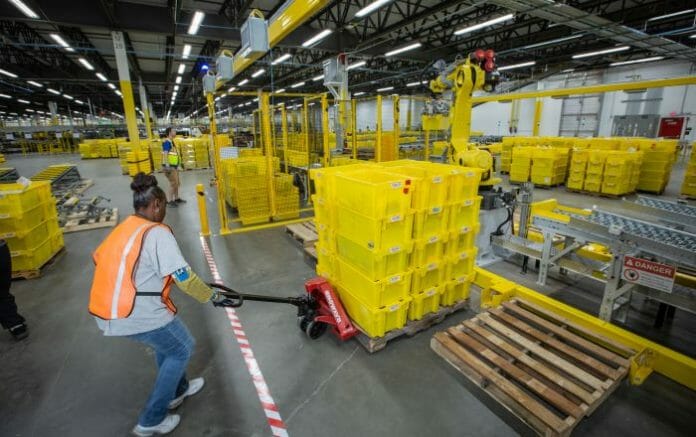A lot of executives write great strategies.
They sit in a boardroom, brainstorm, and usually, a good strategy is born.
But executives often forget that the strategy must be deployed and that transparency is needed to ensure that employees can be mobilised to achieve it across the whole organisation. In our experience, that’s when companies stumble.
You can write the best strategy the business world has ever seen, but if it is not implemented well, it will be for nothing.
And many executives agree that this is a problem.
The Economist Intelligence Unit (EIU) surveyed 500 senior executives from companies with annual revenues of $1 billion or more. Around 90% of respondents admit that they fail to reach all their strategic goals because they don’t implement them well.
Indeed, I believe that implementation is a far more critical consideration than formulating strategy.
The need for alignment
But, before we go further – let’s define “strategy deployment”.
Sometimes referred to as strategy execution or strategy implementation, it is the “doing” part of the strategy; this is when we come up with a plan to reach the goals outlined in the strategy. That means ensuring that the organisation’s structures, systems, processes, and people will be positioned towards achieving them.
In summary: Every part of an organisation needs to be aligned to translate strategy into reality.
In my last column, I mentioned that organisational culture plays a very important role in this. Deploying a strategy that goes against or does not align with an organisation’s current culture will make execution difficult if not impossible.
That said, while having a culture that supports the strategy is important, it is not the only factor. Here’s what we need to deploy a strategy successfully:
C-suite involvement
Imagine a company rolling out a new ERP system. This is part of their organisation-wide digital transformation strategy. However, while employees are expected to use the new system, some C-Suite executives continue to use emails and spreadsheets. Over time, employees fall back to the old ways of doing things because this is leadership’s preferred system.
I often say that if the CEO isn’t actively involved, the transformation programme is already dead in the water.
Leadership should give general oversight, provide resources, support initiatives and communicate the importance of the strategy to the organisation when deploying. Additionally, they must manifest the behaviours that they expect from all the employees in the organisation. Leadership from the top.
Although excessive involvement from C-Suite can damage this stage, the larger problem remains under-involvement of the C-Suite.
Connect strategy to action
A major refinery we worked with had a great strategy but when we went out to the field to see how things were done, we discovered that employees on the ground level were not “linked” to that strategy. They didn’t understand what was required of them to achieve the vision outlined in the strategy. So, nobody was striving towards the new goals!
With that project, we ended up making changes to the performance management systems and even adopted new digital solutions which were eventually rolled out, group-wide.
When deploying a strategy, ask: Are employees working on the right things at the right time to further the strategy, thus making it a reality?
Get the necessary skills or resources
Does your organisation have the right people with the necessary business skills or leadership talent to drive strategy implementation? Are you hiring them? Or are you at least developing those skills among existing executives?
Surprisingly, in my experience, the answer is often “No”.
To illustrate this, a company that wants to transition from making hard drives to providing cloud storage service will certainly need new skill sets, software, and hardware to drive the new strategy forward.
Communicate clearly to empower employees
A surprising 95% of employees are often unaware or do not understand their company’s strategy (Harvard Business Review). So, communication is something we prioritise in all our client engagements. Every employee in the organisation must understand how their work will move the strategy forward, and why it’s important to make the strategy deployment successful.
Measure success
A manufacturing plant we once worked with had a massive backlog of orders due to sudden demand. The company, however, had zero ideas about its capacity.
When we asked them what they think they were at capacity utilisation, they thought they were at 50 to 60%. In fact, they were at only 26%. Their machines did not have capacity measurement capabilities, so they had no idea what they could be making.
You can’t improve what you don’t measure.
… and celebrate them!
This is an often-missed step, but as you can see, strategy deployment is a massive undertaking and employees need to understand not only have they done a good job, but they will soon reap the benefits of their efforts.
Connecting the boardroom to the ground floor is a challenge that all organisations face. But if an organisation wants to successfully deploy a new strategy, it must make that connection. The organisation needs to emphasise what this strategy means for the people on the ground floor and how they will be supported through that journey.
Strategies that help organisations reach new markets or capture new profits are great, but the strategy itself is just a starting point. A plan to successfully deploy the strategy needs to be carefully thought through and since plans are often based on assumptions, they will need continuous tracking and re-evaluation. And that’s why it’s essential for companies to build the ability to pivot quickly.
Krishna Paupamah has worked with companies globally to transform their business for over 35 years. He is the Founder and Group CEO of Renoir Consulting.









